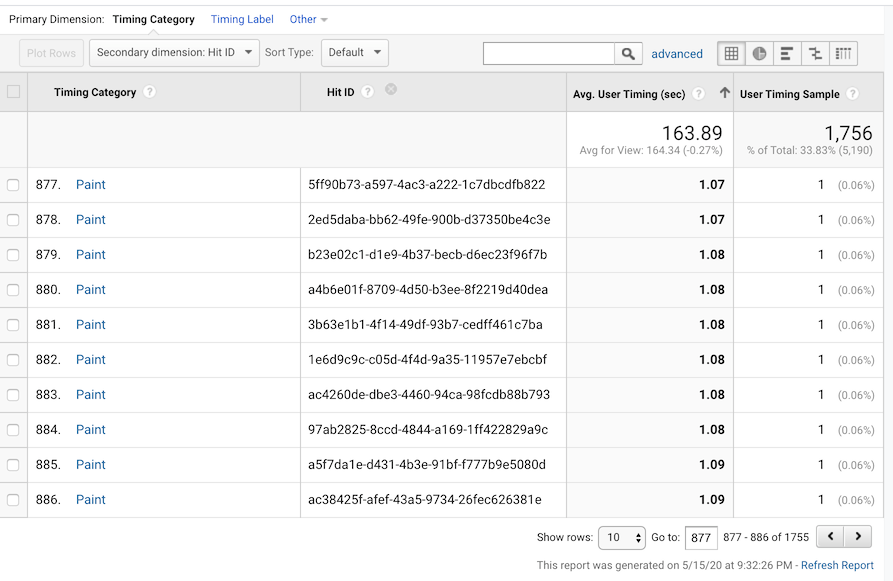Secondary Dimension in Google Analytics: Ideal Practices and Tips
Secondary Dimension in Google Analytics: Ideal Practices and Tips
Blog Article
Enhance Your Data Analysis Making Use Of Additional Measurement in Google Analytics
Discovering the capacities of secondary dimensions in Google Analytics opens a realm of possibilities for refining information evaluation. By layering additional measurements onto main data sets, a more complex story arises, losing light on customer communications and performance indicators.
Understanding Additional Dimensions
Secondary dimensions in Google Analytics refer to extra criteria that can be added to the main dimension, allowing for a more comprehensive evaluation of information (Secondary Dimension in Google Analytics). By incorporating additional dimensions, experts can segment and filter information to uncover patterns, patterns, and connections that might not be noticeable when looking at the information as a whole.

Benefits of Making Use Of Additional Measurements
When evaluating information in Google Analytics, the application of secondary measurements provides vital insights into individual actions and efficiency metrics. By adding a secondary dimension to your main information, you can dive deeper right into the features of your site visitors and their interactions.
Additionally, secondary dimensions boost the context of your key information, giving an extra detailed view of user interaction and performance metrics. In general, the use of second measurements in Google Analytics can significantly boost the deepness and high quality of your data analysis, leading to even more informed decision-making and enhanced results.
Just How to Add Second Dimensions
By integrating secondary measurements in Google Analytics, customers can obtain much deeper insights right into their information evaluation process, permitting even more extensive examination of user actions and performance metrics. Including secondary measurements is a simple procedure that can significantly boost the depth of evaluation. To include a secondary measurement in Google Analytics, start by browsing to the record you intend to analyze. When in the report, find the "Additional measurement" tab above the data table. Click it to expose a dropdown food selection with various alternatives such as Behavior, Technology, and Personalized Dimensions. Select the dimension you intend to add, such as 'Source/Medium' or 'Tool Classification'. This secondary measurement will after that be related to your existing information, supplying additional context and enabling an extra detailed evaluation of customer interactions. By using additional measurements successfully, customers can uncover valuable understandings that might have otherwise been ignored, causing informed decision-making and enhanced efficiency approaches.
Studying Information With Second Dimensions
Utilizing secondary dimensions in data analysis gives a more extensive understanding of individual habits and efficiency metrics. By useful reference including a secondary measurement to your key information established in Google Analytics, you can dig deeper into the characteristics of your web site visitors and their interactions. For example, incorporating the primary measurement of 'source/medium' with the second measurement of 'landing page' can reveal which details web pages are attracting traffic from different resources, helping you optimize these pages for better involvement.

Basically, analyzing information with secondary measurements equips you to obtain useful insights right into customer actions, recognize trends, and make notified choices to improve the performance of your digital residential or commercial properties.
Best Practices for Secondary Measurements
In data evaluation, integrating secondary dimensions efficiently can dramatically improve the deepness of insights originated from metrics and customer behavior patterns. When making use of secondary dimensions in Google Analytics or any kind of other logical tool, it is crucial to follow best methods to ensure the accuracy and importance of the information analysis.
One trick best practice is to thoroughly pick additional measurements that enhance the primary measurement being examined. Picking additional dimensions that provide extra context or additional division can offer an extra comprehensive understanding of the data. It is likewise necessary to prevent overcomplicating the evaluation by consisting of too numerous additional measurements, which may result in confusion or dilution of insights.
Moreover, it is suggested to experiment with different mixes of secondary and primary dimensions to reveal brand-new correlations and trends. Consistently evaluating and fine-tuning the selection of second dimensions based upon the particular objectives of the evaluation can lead to even more workable insights. By complying with these finest practices, data experts can leverage additional dimensions successfully to improve the overall data analysis procedure and decision-making abilities.

Conclusion
In final thought, integrating Clicking Here additional measurements in Google Analytics is essential for a comprehensive data evaluation approach. By leveraging secondary dimensions alongside primary ones, marketing experts and experts can discover useful insights and relationships that can notify decision-making and enhance digital marketing techniques. Comprehending how to efficiently utilize second measurements and adhering to ideal methods will permit professionals to remove significant data and boost their total performance metrics.
Second dimensions in Google Analytics refer to added parameters that can be added to the key measurement, allowing for an extra comprehensive analysis of information. By incorporating second measurements, analysts can segment and filter information to uncover patterns, fads, and relationships that might not be noticeable when looking at the information as a whole. Combining the main dimension of 'source/medium' with the second dimension of 'touchdown page' can reveal which specific pages are attracting web This Site traffic from various resources, assisting you maximize these pages for far better interaction.
One key best method is to thoroughly pick second measurements that enhance the primary measurement being analyzed. By following these ideal practices, information experts can leverage secondary measurements efficiently to boost the overall data analysis procedure and decision-making capacities.
Report this page